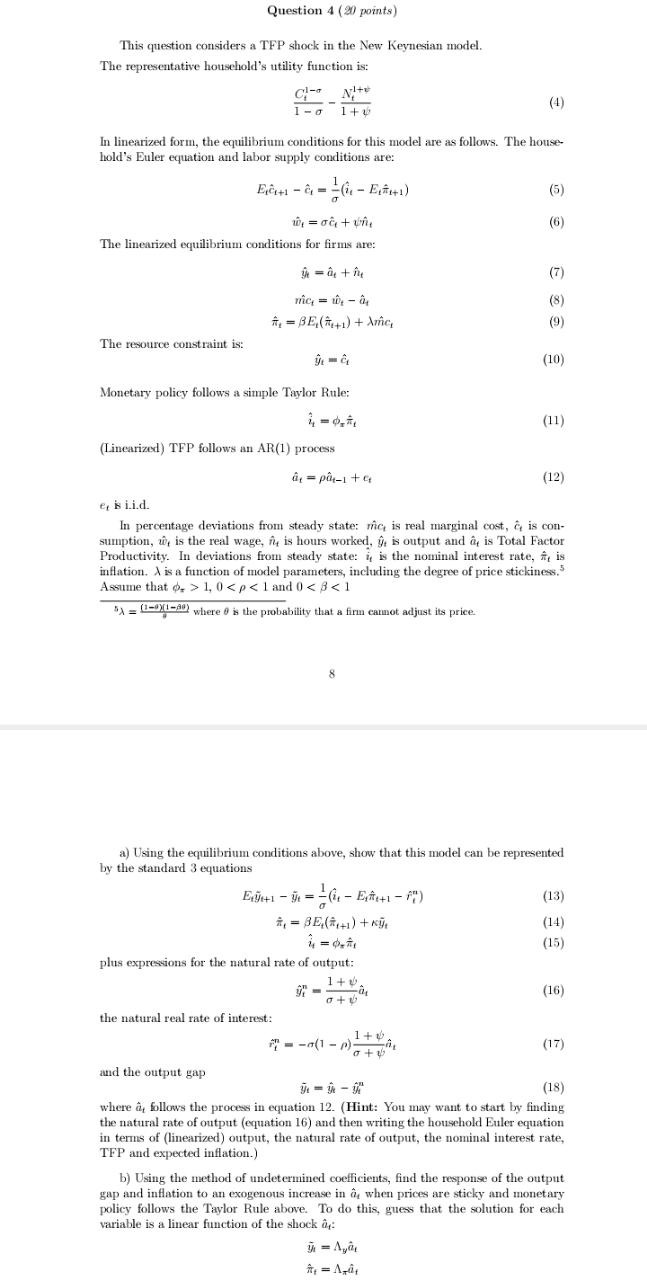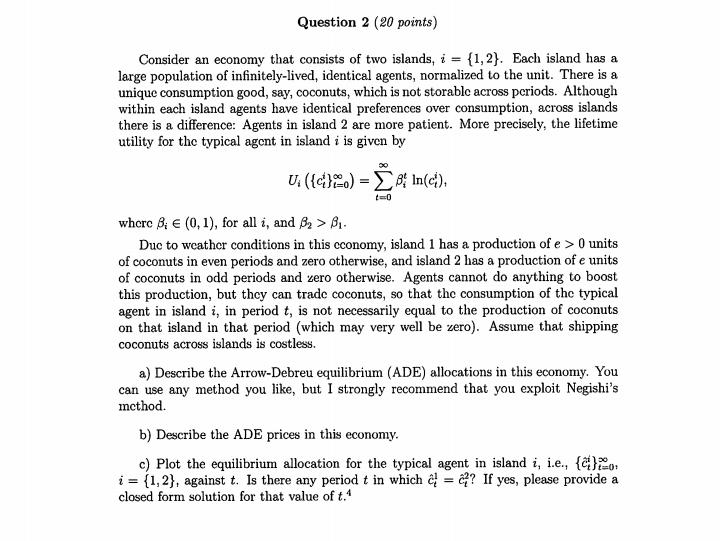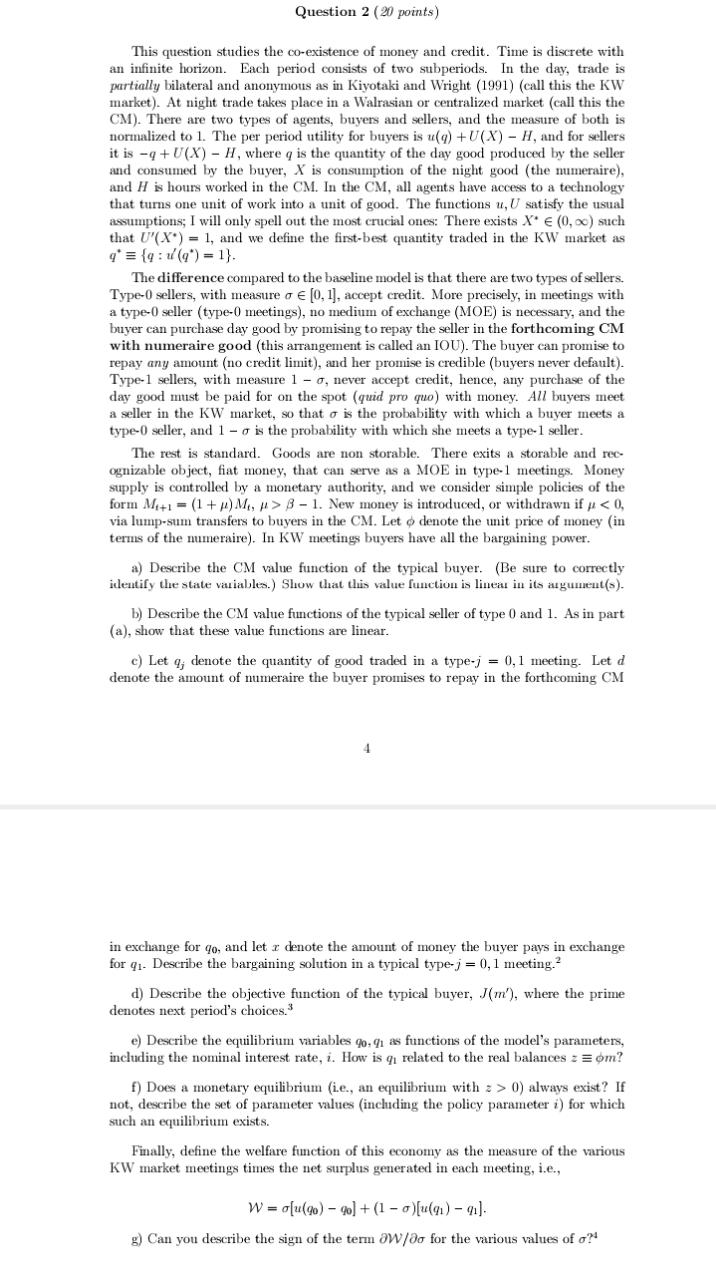



**Hi tutors help me.
Question 4 (20 points) This question considers a TFP shock in the New Keynesian model. The representative household's utility function is: CH- Nite 1 + 1 (4) In linearized form, the equilibrium conditions for this model are as follows. The house- hold's Euler equation and labor supply conditions are: (5) (6) The linearized equilibrium conditions for firms are: mic, = wit - 04 A, = BE,(A,+1) + Amic, The resource constraint is: Monetary policy follows a simple Taylor Rule: (11) (Linearized) TFP follows an AR(1) process at = put-1 + (12) er is i.i.d. In percentage deviations from steady state: mic, is real marginal cost, & is con- sumption, w, is the real wage, n is hours worked, y, is output and a, is Total Factor Productivity. In deviations from steady state: i, is the nominal interest rate, #, is inflation. A is a function of model parameters, including the degree of price stickiness. Assume that o > 1, 0 qH, 2. both projects have positive NPV if the entrepreneur works, but negative if she shirks PHR > qHR > I > PLR + B> qLR +b 3. pledgeable income is higher for project 2 but lower than the cost of investment PH ( R - Ap) B )
qHR > I and Show that monitoring is useful if and only if B-b Cs; In(c). where B E (0, 1), for all i, and &, > 81- Due to weather conditions in this cconomy, island 1 has a production of e > 0 units of coconuts in even periods and zero otherwise, and island 2 has a production of e units of coconuts in odd periods and zero otherwise. Agents cannot do anything to boost this production, but they can trade coconuts, so that the consumption of the typical agent in island i, in period t, is not necessarily equal to the production of coconuts on that island in that period (which may very well be zero). Assume that shipping coconuts across islands is costless. a) Describe the Arrow-Debreu equilibrium (ADE) allocations in this economy. You can use any method you like, but I strongly recommend that you exploit Negishi's method. b) Describe the ADE prices in this economy. c) Plot the equilibrium allocation for the typical agent in island i, i.e., (C}pe i = {1,2), against t. Is there any period t in which & = @? If yes, please provide a closed form solution for that value of t.*Question 2 (20 points) This question studies the co-existence of money and credit. Time is discrete with an infinite horizon. Each period consists of two subperiods. In the day, trade is partially bilateral and anonymous as in Kiyotaki and Wright (1991) (call this the KW market). At night trade takes place in a Walrasian or centralized market (call this the CM). There are two types of agents, buyers and sellers, and the measure of both is normalized to 1. The per period utility for buyers is u(q) + U(X) - H, and for sellers it is -q + U(X) - H, where q is the quantity of the day good produced by the seller and consumed by the buyer, X is consumption of the night good (the numeraire), and H is hours worked in the CM. In the CM, all agents have access to a technology that turns one unit of work into a unit of good. The functions u, U satisfy the usual assumptions; I will only spell out the most crucial ones: There exists X* E (0, co) such that U'(X*) = 1, and we define the first-best quantity traded in the KW market as q' = (q : (q') = 1}. The difference compared to the baseline model is that there are two types of sellers. Type-0 sellers, with measure o c [0, 1), accept credit. More precisely, in meetings with a type-0 seller (type-0 meetings), no medium of exchange (MOE) is necessary, and the buyer can purchase day good by promising to repay the seller in the forthcoming CM with numeraire good (this arrangement is called an IOU). The buyer can promise to repay any amount (no credit limit), and her promise is credible (buyers never default). Type-1 sellers, with measure 1 - o, never accept credit, hence, any purchase of the day good must be paid for on the spot (quid pro quo) with money. All buyers meet a seller in the KW market, so that o is the probability with which a buyer meets a type-0 seller, and 1 - o is the probability with which she meets a type-1 seller. The rest is standard. Goods are non storable. There exits a storable and rec- ognizable object, fiat money, that can serve as a MOE in type-1 meetings. Money supply is controlled by a monetary authority, and we consider simple policies of the form Mitt = (1 + p) M, p> 8 - 1. New money is introduced, or withdrawn if p > 0) always exist? If not, describe the set of parameter values (including the policy parameter ?) for which such an equilibrium exists. Finally, define the welfare function of this economy as the measure of the various KW market meetings times the net surplus generated in each meeting, i.e., W = olu(go) - 90] + (1 - o)[u(q) - q]. g) Can you describe the sign of the term OW/do for the various values of o














